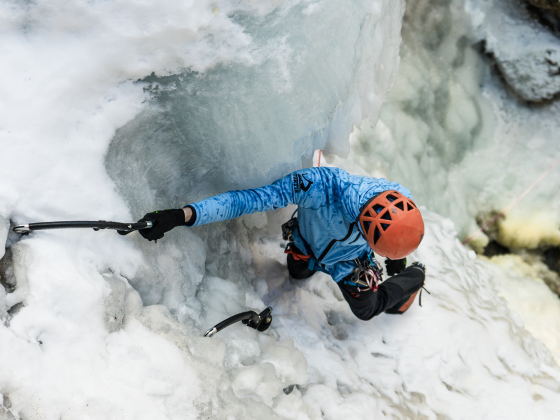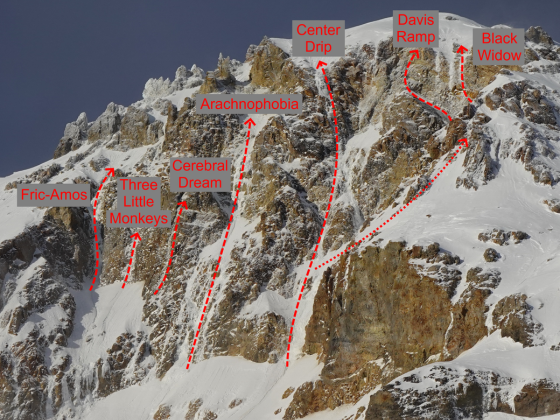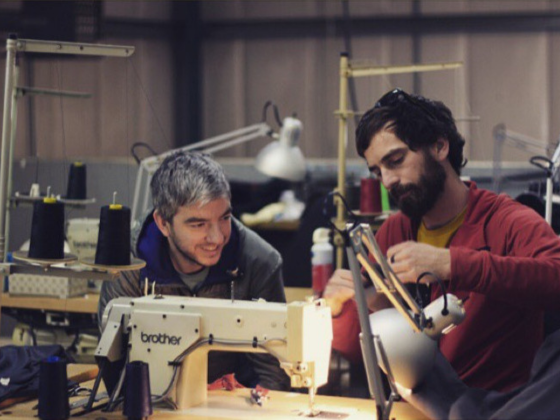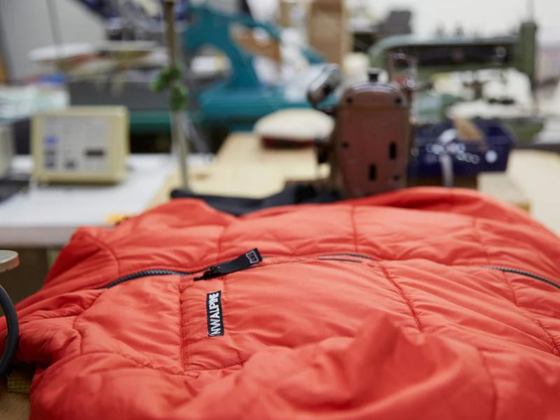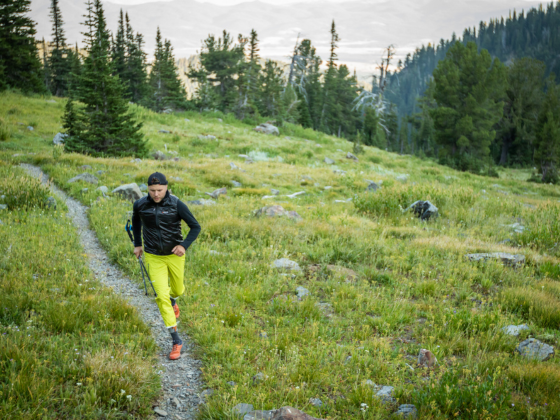Introduction
The Black Spider is one of Oregon’s most enigmatic climbing objectives. This large headwall on the east side of Mt Hood is said to contain some of the region’s best alpine climbs - or unreasonable loose rock and objective hazard - depending on whom you ask. For most of my climbing career I assumed I wasn’t strong (or crazy!) enough to try any routes on the Spider. I’d read about Wayne Wallace’s dozen attempts to complete the first ascent of Center Drip, and I’d looked at the strangely meandering lines and intimidating grades on the old, hand-drawn topo. After climbing Yocum Ridge in 2020, however, my partner and I agreed we were ready to take a look, unsure of what we’d find. Over the next few climbing seasons I made many trips to the Spider, often finding no ice, or fleeing due to rockfall, but occasionally getting up some exceptional, long, moderate ice climbs! The goal of this writeup is to provide a comprehensive, updated overview of the Black Spider and its routes, reflecting how they are often climbed in contemporary practice. I’ll begin by discussing some background information on the hazards, climbing season, and approach, and then provide a description of each route, of course including a lot of photos!
Hazards
Before getting to the fun part, I feel obligated to discuss the objective hazards present on the Black Spider, as it is unfortunately and undeniably one of the most dangerous aspects of Mount Hood. Though the hazards are the same as on the rest of the mountain, namely rockfall, icefall, and avalanches, they are exacerbated by the wall’s east-facing aspect.
Avalanches: since most winter storms pass over the mountain in an easterly direction, the slopes around the Black Spider are frequently the most wind-loaded on the mountain. In particular, the Wy’east Face and Newton Clark Headwall regularly release large avalanches. These sometimes run all the way down the glacier and fill the canyons below the treeline with debris. Large crowns have also been spotted in the cirque directly underneath the Spider, and on the summit snow slope above the right side of the face. Remember that the entire approach is above the NWAC forecast zone. A “moderate” NWAC forecast usually does not reflect the greater snow quantity and stronger winds present on the upper mountain where avalanche danger may still be extreme. In short, you should be very cautious when deciding if it is appropriate to approach the wall, and acknowledge that you are relying completely on your own assessment of the snowpack.
Rockfall: this is the main hazard on the Black Spider. Since it is east-facing, the wall typically does not accumulate rime like other parts of the mountain, and thus there is nothing to hold its notoriously loose rock in place. Unfortunately the same cycles of melting and refreezing that create climbable ice also work to gradually loosen the rocks, and some melting occurs regularly as the Spider gets immediate, direct morning sun. The ideal climbing weather is cold with a low freezing level and a high cloud layer to block the sun. Pay attention and watch for rockfall as you’re racking up at the base of the face. Some days it will be obviously unsafe and you’ll wisely bail; other days it will be mysteriously quiet. Once you’re actually climbing, mitigate the hazard by placing all of your anchors in sheltered areas. Typically this means tucking them up against something steep, so that falling rocks go over you.
Although I’m skeptical of my ability to infer anything useful, I have noticed there is often a wave of falling rocks that occurs the first couple hours after sunrise. Often things quiet down as the sun wraps around and shines more directly on the southern aspect of the mountain. Wayne suggests that it may be worth getting a late start, trying to time the beginning of the technical climbing with the sun getting off of the face. This is an interesting idea though it hasn’t been tested much.
Icefall: though this isn’t the biggest concern on the Spider, it can still occur. Be aware that there are several large, often rime-covered gendarmes on the summit ridge above the left side of the face, which can create icefall issues, particularly when it’s windy up high. Keep your belays sheltered to protect from this and also any leader-caused icefall. On the approach to the Spider be wary of rime falling from the area around the Steel Cliffs South Face route, which often takes the brunt of the wind.
Glacier travel: finally, it’s worth mentioning that the approach to the Spider requires traveling on, at minimum, one glacier, the Newton Clark. There are multiple bergschrunds at the base of the wall that are often questionably bridged, so most groups tend to be tied in by this point.
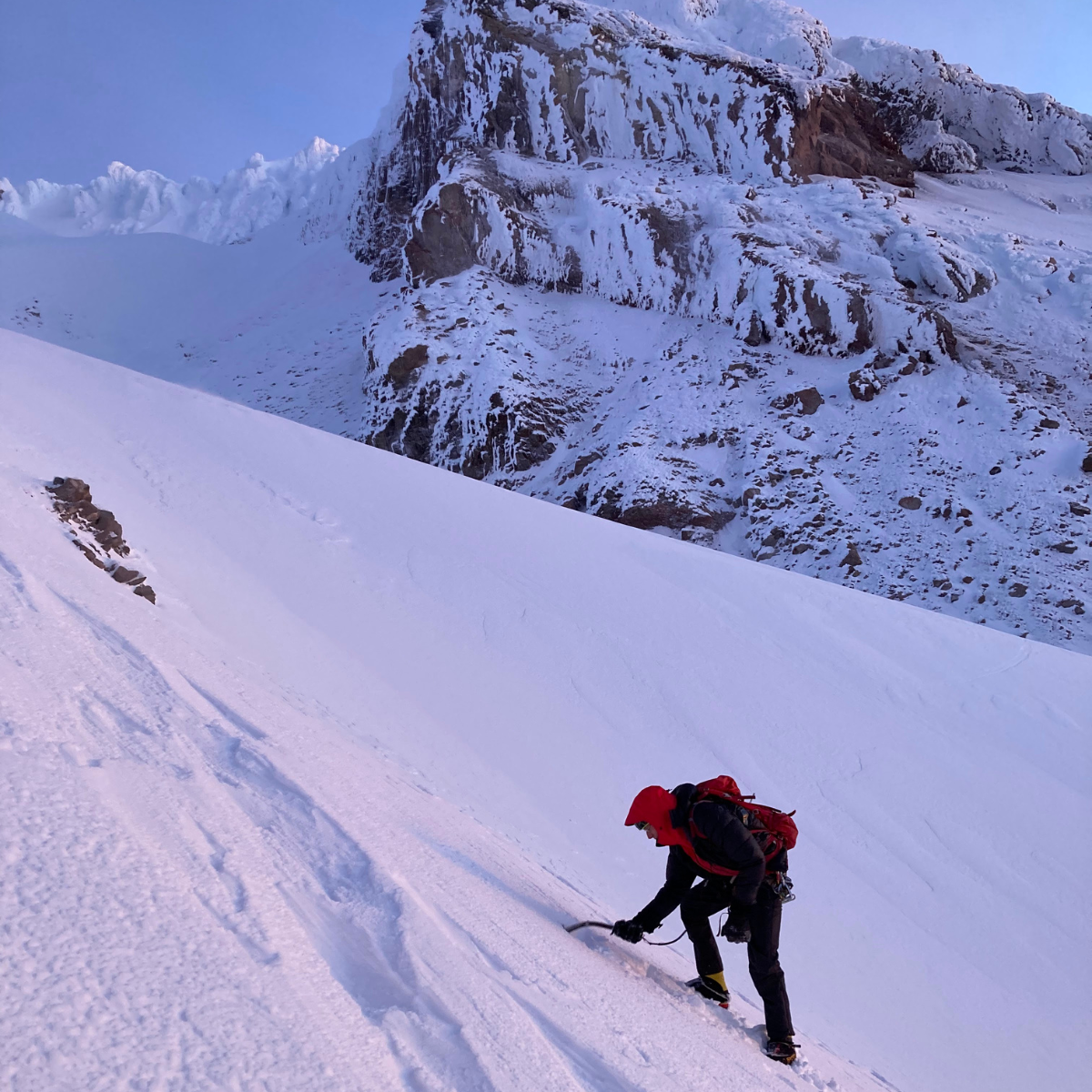

Approach
Photo #1: Digging around to assess the snow conditions with the prominent White River access ramp in the background.
The easiest way to reach the Black Spider is to begin at Timberline. Head up the south side and trend right above the top of the Palmer lift to the edge of the White River Glacier around 9200 feet. Here you’ll find an obvious ramp-like feature that allows you to easily walk down onto the glacier. Cross it and climb back up the eastern moraine. In good conditions crossing the glacier should take no more than 15 minutes. Continue traversing counter-clockwise around the mountain, crossing underneath the Wy’East Face and the Newton Clark Headwall, trying to maintain your elevation. Eventually you’ll pass the bottom of a cliff band that rises up and to the right, separating the Newton Clark Headwall from the Black Spider, and you can start heading up into the cirque. Once you’ve ascended a bit there’s a flat glacial bench before the bergschrunds where it makes sense to rack up and get out the rope if you haven’t already.
Approach
Photo #2: Crossing the bergschrunds just above the flat bench.
The easiest way to reach the Black Spider is to begin at Timberline. Head up the south side and trend right above the top of the Palmer lift to the edge of the White River Glacier around 9200 feet. Here you’ll find an obvious ramp-like feature that allows you to easily walk down onto the glacier. Cross it and climb back up the eastern moraine. In good conditions crossing the glacier should take no more than 15 minutes. Continue traversing counter-clockwise around the mountain, crossing underneath the Wy’East Face and the Newton Clark Headwall, trying to maintain your elevation. Eventually you’ll pass the bottom of a cliff band that rises up and to the right, separating the Newton Clark Headwall from the Black Spider, and you can start heading up into the cirque. Once you’ve ascended a bit there’s a flat glacial bench before the bergschrunds where it makes sense to rack up and get out the rope if you haven’t already.
When is the Black Spider “In”?
Ice can begin forming on the Black Spider as early as October. In order for things to set up nicely there needs to be early-season snow followed by warmer weather that creates thaw/freeze cycles. Almost all of the documented climbing on the Spider in the last few years has occurred following this pattern. Once winter truly begins it is typically too cold for significant amounts of new ice to form. If it forms in the fall, the ice often lasts until March, and possibly longer, though the warmer spring weather worsens the rockfall problem and keeps most people away. Some melting and refreezing should occur in the Spring as well, though this has not been a documented source of climbable ice in the last few years
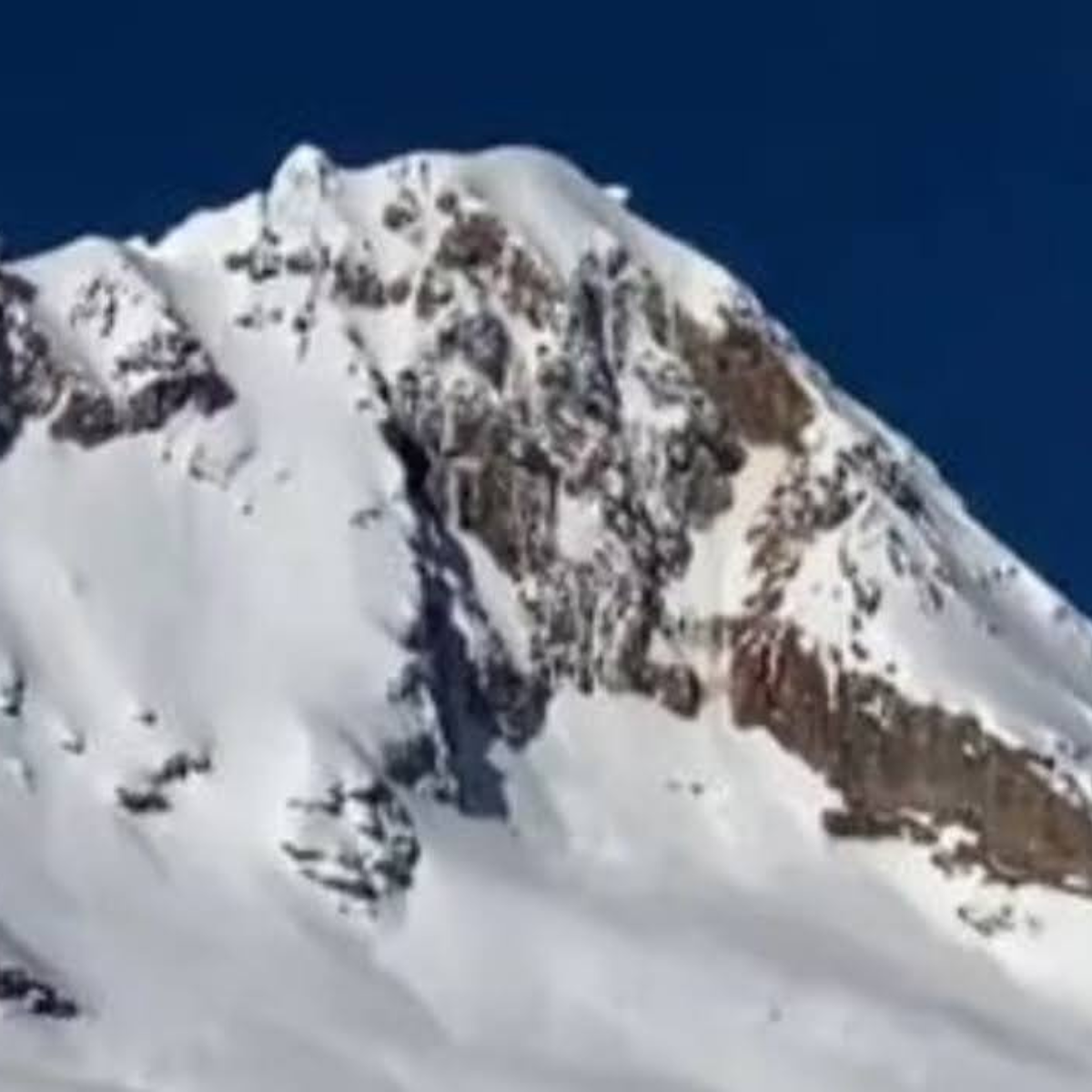
Photo #3: A grainy, zoomed-in photo from Meadows, screenshotted from Instagram in January 2022 when the face was in historically fat conditions.
It’s difficult to tell if the Spider is in without approaching it, but there are a few ways you may be able to get some useful information. In the fall you can get a nice view from Klinger Springs climbing area or by driving up Brooks Meadow road off highway 35 towards Dufur. Binoculars will be helpful. During the winter you can get a decent view from Mt Hood Meadows and can sometimes harvest photos from Instagram by searching for posts tagged with the Mt Hood Meadows location or hashtag. Sometimes Meadows has a webcam pointed at the upper mountain that is archived on http://mtcams.net (not working at the time of writing). You can always reach out and ask the Mount Hood regulars about the Spider, though they may be trying to keep it a secret if it’s fat.
Gear
In addition to your normal mountaineering and ice climbing gear you should carry some rock pro. Having a small rack of cams and nuts (and maybe pitons) greatly increases your options if the ice is thin or aerated, or if you need to bail part way up. The rock quality on the Spider varies considerably. There’s a lot of useless, muddy conglomerate, but also large areas with solid blocks and usable cracks.
Free Climbing Guide Digital Download
Vendor
Product
Conclusion
To conclude I’d like to indulge and ponder the question: is climbing the Black Spider “worth it”? I don’t know, and there isn’t an easy answer. On several of my trips up the Spider I was fortunate to climb with partners far stronger than myself, and I felt reassured that these people were at the moment sharing my strange obsession. On the other hand, there are many extremely strong alpine climbers in the Pacific Northwest who make it a point to avoid technical climbing on the cascade volcanoes. In the grand scheme of things the climbing is never that hard or interesting, and the risk of rockfall is likely a lot higher than in more worthy ranges. Regardless of its overall quality, the Spider will always remain alluring for Oregon’s ice-starved, aspiring alpinists. I hope that the information I’ve provided here helps anyone interested make safe, informed choices, even if that choice is to climb somewhere else!
Acknowledgements
Thanks to all my climbing partners who accompanied me to the Black Spider, whether enthusiastically or reluctantly. Thanks to everyone who allowed me to use their photos, primarily Aaron Nelson and Adrien Costa, as well as several others who declined to be named.
Selected Resources, Trip Reports, etc.
- Wayne’s Black Spider page: The Black Spider – Wayne's site (wordpress.com)
- First ascent of Center Drip: [TR] FA-Black Spider-Center Drip-Mt Hood 3/6/201 - Ice Climbing Forum - CascadeClimbers.com
- First ascent of Fric-Amos: [TR] Black spider wall new route - Fri Amos 3/20/2010 - Oregon Cascades - CascadeClimbers.com
- First ascent of Arachnophobia “Direct” variation: [TR] Mt. Hood - Arachnophobia (Variation?) Black Spider Headwall 1/6/2017 - Oregon Cascades - CascadeClimbers.com
- First ascent of Three Little Monkeys: [TR] Mt. Hood - FA Three Little Monkeys - New Route on The Black Spider 03/31/2018 - Oregon Cascades - CascadeClimbers.com
- First ascent of Three Little Monkeys: AAC Publications - Mt. Hood, Three Little Monkeys (americanalpineclub.org)
- Belated writeup regarding first ascent of Cerebral Dream: [TR] Mount Hood (old climb / new report) - Black Spider - Cerebral Dream 5/12/2008 - Oregon Cascades - CascadeClimbers.com
- Classic CCC trip report of a party accidentally rappelling the Spider: [TR] Mt Hood - Eliot Glacier (minus the HW plus the BS) 11/2/2007 - Oregon Cascades - CascadeClimbers.com
- Arachnophobia Direct trip report: Mt. Hood, Arachnophobia Direct (AI3) - Climber Kyle
- Old, hand-drawn topo: blackspidertopo.jpg (2338×1700) (wordpress.com)
- Mostly updated topo: Mt Hood - East Face - Black Spider (fivestarcrux.com)
- Incomplete Mountain Project page for Mt Hood’s “East Side Climbing”: Climbing in East Side, (A) Mt. Hood (mountainproject.com) (currently contains only two Black Spider routes)
- Back when Mt Hood made it into The Alpinist: Winter Roundup: Routes Worth the Wait - Alpinist
- Mt Hood (and elsewhere) webcam aggregator: Mountain Cameras (mtcams.net)

